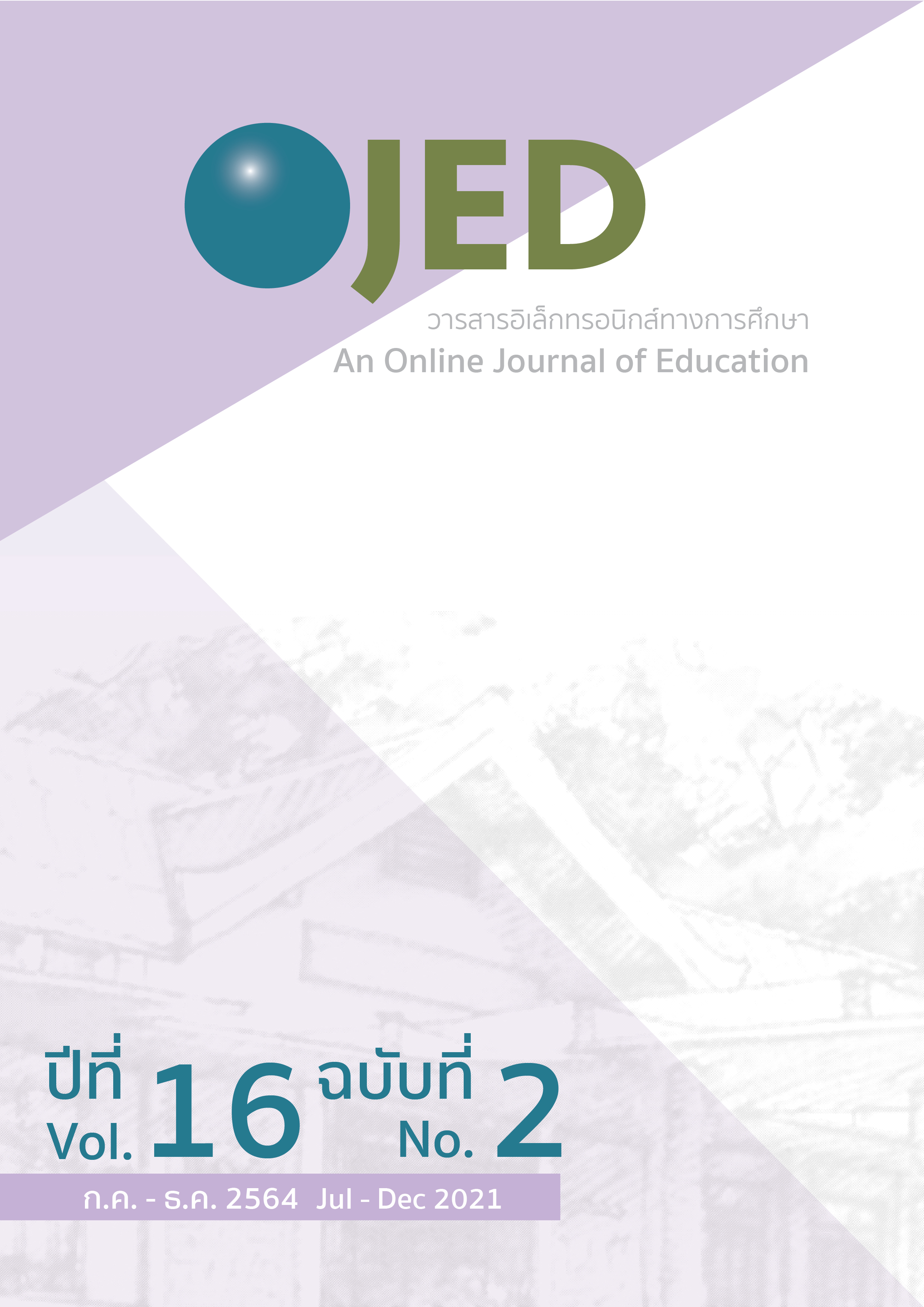An Instruction Development by Using Graphic Organizers to Construct the Understanding and Learning Retention in Art History for Undergraduate Students
DOI:
https://doi.org/10.14456/ojed.2021.60Keywords:
art history, graphic organizers, learning retention, understandingAbstract
The aim of this research was to develop learning retention and understanding by using graphic organizers in art history for undergraduate students. The quasi-experimental design was conducted in this study. The samples were 29 freshman year students in art education program, art music and dancing department, education faculty, Chulalongkorn University. Five research instruments were used. They consisted of 1) Lesson plans 2) Teaching media 3) Art history tests 4) student’s behavior observation form 5) student’s opinions questionnaire. Test results was analyzed by t–test. The research findings are as follows. 1) After students were introduced to graphic organizers usage in art history class, students’ understanding in art history was increased to higher level at the significance level of 0.5 2) Based on students’ opinion it was found that 1. Graphics organizers are useful for sequencing contents 2. Graphics organizers are helpful in memorizing information 3. Graphic organizers are helpful in summarizing contents, the topic given the least amount of opinion was graphic organizers being helpful in writing down contents. 3) Students concentrated and showed interaction in the art history class at moderate level. However, students presented writing and group discussion in low level.
References
ทิศนา แขมมณี. (2545). ศาสตร์การสอน: องค์ความรู้เพื่อการจัดกระบวนการเรียนรู้ที่มีประสิทธิภาพ. จุฬาลงกรณ์มหาวิทยาลัย.
นิภากร ธาราภูมิ. (2555). การศึกษารูปแบบการสอนของผู้เชี่ยวชาญวิชาประวัติศาสตร์ศิลป์ในระดับอุดมศึกษา [วิทยานิพนธ์ปริญญามหาบัณฑิต ไม้ได้ตีพิมพ์]. จุฬาลงกรณ์มหาวิทยาลัย.
ประไพลิน จันทร์หอม (2547). ผลการสอนวิชาสุนทรียภาพของชีวิตโดยใช้เทคนิคการจัดผังมโนทัศน์ที่มีต่อผลสัมฤทธิ์ทางการเรียนของนักศึกษาสถาบันราชภัฎเชียงใหม่ [วิทยานิพนธ์ปริญญามหาบัณฑิตไม่ได้ตีพิมพ์]. จุฬาลงกรณ์มหาวิทยาลัย.
ปารณีย์ ด้วงอิ่ม. (2553). ผลของการสอนออกแบบทัศนศิลป์โดยใช้แผนผังกราฟิกที่มีต่อผลการเรียนรู้ของนักเรียนในระดับชั้นมัธยมศึกษาปีที่ 4 [วิทยานิพนธ์ปริญญามหาบัณฑิต ไม่ได้ตีพิมพ์]. จุฬาลงกรณ์มหาวิทยาลัย.
ปุณณรัตน์ พิชญไพบูลย์. (2561). จิตวิทยาศิลปะ : สุนทรียศาสตร์เชิงประจักษ์ (พิมพ์ครั้งที่ 2). จุฬาลงกรณ์มหาวิทยาลัย
พิริยะ ไกรฤกษ์. (2544). อารยธรรมไทย พื้นฐานทางประวัติศาสตร์ศิลปะ. อมรินทร์พิ้นติ้งแอนด์พับลิชชิ่ง.
มะลิฉัตร เอื้ออานันท์. (2545). ศิลปศึกษาแนวปฏิรูป (พิมพ์ครั้งที่2). จุฬาลงกรณ์มหาวิทยาลัย.
วิรัตน์ พิชญไพบูลย์. (2528). ความเข้าใจศิลปะ. ไทยวัฒนาพานิช.
ศักดิ์ชัย สายสิงห์. (2558). แนวทาง (ใหม่) ของการเรียนการสอนประวัติศาสตร์ศิลปะ. http://vcharkarn.com/varticle/91
สาวิตรี บุตรเล็ก. (2548). ทรรศนะของผู้เชี่ยวชาญกับการสอนประวัติศาสตร์ศิลป์ ตามแนวคิดแบบวิจารณญาณในสาขาทัศนศิลป์ ของสถาบันอุดมศึกษาของรัฐ [วิทยานิพนธ์ปริญญามหาบัณฑิต ไม่ได้ตีพิมพ์]. จุฬาลงกรณ์มหาวิทยาลัย.
อัศนีย์ ชูอรุณ. (2530). ประวัติศิลปะตะวันตก. โอเดียนสโตร์.
แอมโบรซ. (2556). How Learning Works การเรียนรู้แห่งศตวรรษที่ 21 7 หลักการสร้างนักเรียนรู้แห่ง อนาคตใหม่. โอเพ่นเวิร์ด.
อำไพ ตีรณสาร. (2558). วิธีการสอนศิลปศึกษา. http://pioneer.chula.ac.th/~tampai1/ampai/cont3.htm
Atkinson, R. C., & Shiffrin, R. M. (1968). Chapter: human memory: a proposed system and its control processes. The psychology of learning and motivation, 2, 89–195.
Drapeau, P. (2009). Differentiating with Graphic Organizers. Corwin Press.
Hyerle, D., (2009). Visual Tools for Transforming Information into Knowledge. California.
Hueneburg, K. (2016) A History of Art Education at Illinois State University. Illinois State University.
Marcia, P. (2014). History of Art A student’s handbook Fifth Edition. Routledge.
Downloads
Published
How to Cite
Issue
Section
License

This work is licensed under a Creative Commons Attribution-NonCommercial-NoDerivatives 4.0 International License.




